Contents
| |||||
| Decades: | |||||
|---|---|---|---|---|---|
| See also: | Other events of 1647 List of years in Denmark | ||||
Events from the year 1647 in Denmark .
| |||||
| Decades: | |||||
|---|---|---|---|---|---|
| See also: | Other events of 1647 List of years in Denmark | ||||
Events from the year 1647 in Denmark .

Christian V was King of Denmark and Norway from 1670 until his death in 1699.
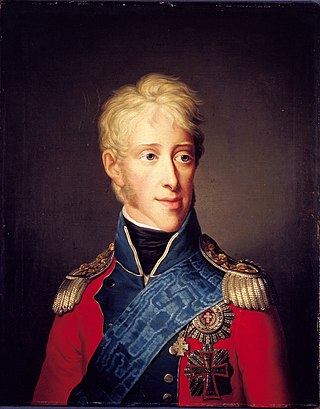
Frederick VI was king of Denmark from 13 March 1808 until his death in 1839 and king of Norway from 13 March 1808 to 7 February 1814. He was the last king of Denmark–Norway. From 1784 until his accession, he served as regent during his father's mental illness and was referred to as the "Crown Prince Regent". For his motto he chose God and the just cause and since the time of his reign, succeeding Danish monarchs have also chosen mottos in the Danish language rather than the formerly customary Latin. He was succeeded by his half cousin Christian.

Christian VI was King of Denmark and Norway from 1730 to 1746. The eldest surviving son of Frederick IV and Louise of Mecklenburg-Güstrow, he is considered one of Denmark-Norway's more anonymous kings, but he was a skilled politician, best known for his authoritarian regime. He was the first king of the Oldenburg dynasty to refrain from entering in any war. During his reign both compulsory confirmation (1736) and a public, nationwide school system (1739) were introduced. His chosen motto was "Deo et populo".

Frederick IV was King of Denmark and Norway from 1699 until his death. Frederick was the son of Christian V of Denmark-Norway and his wife Charlotte Amalie of Hesse-Kassel.

Frederick V was King of Denmark and Norway and Duke of Schleswig-Holstein from 6 August 1746 until his death in 1766. A member of the House of Oldenburg, he was the son of Christian VI of Denmark and Sophie Magdalene of Brandenburg-Kulmbach.

Amalienborg is the official residence for the Danish royal family and is located in Copenhagen. Frederick VIII's palace complex has four identical Classical façades, effectively four palaces, with Rococo interiors, laid around an octagonal courtyard. At the centre is a large equestrian statue of Frederick V. Amalienborg was originally built for four noble families, but after Christiansborg Palace burned in 1794 the royal family bought the palaces and moved in. Over the years various monarchs and their families have lived there, including today's King Frederik X and Queen Mary.
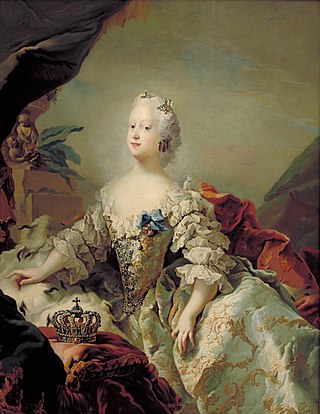
Louise of Great Britain was Queen of Denmark and Norway from 1746 until her death, as the first wife of King Frederick V. She was the youngest surviving daughter of King George II of Great Britain and Caroline of Ansbach.

Christian, Crown Prince of Denmark, Count of Monpezat, is the heir apparent to the Danish throne. He is the eldest child of King Frederik X and Queen Mary. He was born during the reign of his paternal grandmother, Queen Margrethe II. He became Crown Prince of Denmark following his grandmother's abdication and his father's subsequent ascension to the Danish throne on 14 January 2024.

Frederick III of Holstein-Gottorp was a Duke of Holstein-Gottorp.

Anne Catherine of Brandenburg was Queen of Denmark and Norway from 1597 to 1612 as the first spouse of King Christian IV of Denmark.

Sophie Magdalene of Brandenburg-Kulmbach was Queen of Denmark and Norway by marriage to King Christian VI of Denmark and Norway.

Duchess Marie Elisabeth of Saxony was a duchess consort of Holstein-Gottorp as the spouse of Duke Frederick III of Holstein-Gottorp. As a widow, she became known as a patron of culture.
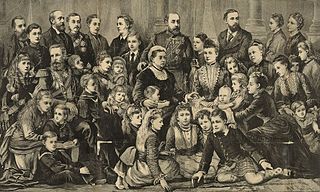
Queen Victoria, the British monarch from 1837 to 1901, and Prince Albert had 9 children, 42 grandchildren, and 87 great-grandchildren. Victoria was called the "grandmother of Europe".
Axel Gyldenstierne was a Danish-Norwegian official and Governor-general of Norway from 1588 until 1601.
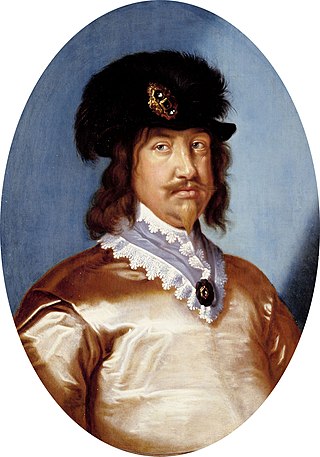
Christian was Prince-Elect of Denmark from 1610 and Heir Apparent to the Throne of the Kingdom of Norway from 1603. Dying in 1647, he was succeeded by his younger brother, Prince Frederick.

Magdalene Sibylle of Saxony, in Denmark known as Magdalena Sibylla, was the Princess of Denmark and Norway from 1634 to 1647 as the wife of Prince-Elect Christian of Denmark, and the Duchess consort of Saxe-Altenburg as the wife of Frederick Wilhelm II, Duke of Saxe-Altenburg.

Prince Ulrik of Denmark was a son of King Christian IV of Denmark and Norway and his consort Queen Anne Catherine of Brandenburg. As the fourth-born son, he bore the merely titular rank of Duke of Holstein and Schleswig, Stormarn and Ditmarsh; however, he had no share in the royal-ducal condominial rule of Holstein and Schleswig, wielded by the heads of the houses of Oldenburg (royal) and its cadet branch Holstein-Gottorp (ducal). In 1624 Ulrik was appointed administrator of the Prince-Bishopric of Schwerin as Ulrich III. However, in 1628 Wallenstein's conquest of the prince-bishopric de facto deposed him. His father had to renounce all his family claims to prince-bishoprics in 1629. When in 1631 Swedish forces reconquered the prince-bishopric Ulrik failed to reascend as administrator.
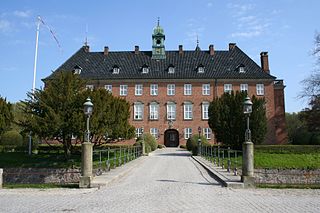
Vemmetofte Convent is a former manor house in Faxe Municipality south of Copenhagen, Denmark. It was turned into a convent by Princess Sophia Hedwig of Denmark in 1735. Since 1975 it has provided housing available to the general public.
Events from the 1580s in Denmark.

Christen Willumsen Worm was a Danish theologian and Bishop of the Diocese of Zealand from 1711 until his death. Worm began his career as a scholar and a priest. Over the course of his tenure as bishop, his authority as primus inter pares was repeatedly challenged.